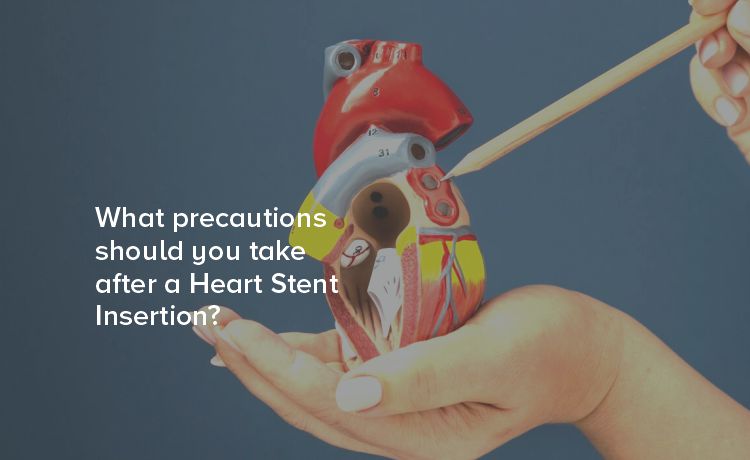
Receiving a heart stent can be a life-changing event, offering renewed vitality and hope for a healthier future. However, it's pivotal to recognize that the procedure itself is just the beginning of a nuanced recovery process that requires diligent care and lifestyle modifications. Whether you've recently undergone a stent insertion or are preparing for the procedure, understanding the essential steps for post-operative care is crucial.
Before we explore post-stent care in depth, it's essential to understand what a heart stent is and why it might be necessary for certain heart conditions. A heart stent, often referred to as coronary stenting, involves the placement of a small, mesh-like tube (stent) into an artery to restore blood flow. This procedure is frequently performed for individuals with coronary artery disease (CAD) or those at risk of a heart attack.
The immediate 24 hours following a heart stent insertion is a critical period for your recovery. You may be advised to stay in the hospital for a duration depending on your overall health and the specifics of your procedure. During this time, you should expect:
Most patients will remain in the hospital for at least 24 hours for observation. Regular monitoring of your heart rate, blood pressure, and the puncture site will be conducted to ensure there are no immediate complications.
It is important to get adequate rest and keep the puncture site clean and dry. Nurses will frequently check the site for any signs of bleeding or infection.
You will be given a regimen of medications that may include blood thinners, anti-platelets, and pain relievers. It's crucial to take these as prescribed to minimize the risk of blood clots and alleviate any discomfort.
Upon discharge, the focus shifts to managing your recovery at home, under the guidance of your healthcare provider. This phase includes:
Educate yourself about the importance of each medication and their potential side effects. You may need to manage statins, beta-blockers, and angiotensin-converting enzyme (ACE) inhibitors, along with antiplatelets.
During the first week, you should gradually start incorporating light physical activities into your routine. Start with short walks and increase the distance as you feel more comfortable.
Keep your incision site clean and dry. If you notice any signs of infection, such as redness, swelling, or drainage, contact your healthcare provider immediately.
A heart-healthy diet is crucial for recovery. This means reducing your intake of saturated fats, cholesterol, and sodium, while emphasizing fruits, vegetables, whole grains, and lean proteins.
Every cigarette you don't smoke makes your recovery easier and faster. Quitting smoking is one of the most pivotal steps you can take to improve your heart health.
Receiving a heart stent necessitates a commitment to long-term lifestyle changes. This includes:
Developing and adhering to an exercise routine approved by your healthcare provider can greatly enhance your cardiovascular health.
High stress levels can negatively impact your heart. Techniques such as meditation, yoga, and hobbies can aid in stress reduction.
Staying on top of your medication schedule is a long-term commitment. Use pill organizers or set alerts to ensure you never miss a dose.
Regular visits to your cardiologist are essential to monitor your heart's progress, adjust medications, and address any concerns you may have.
Engage with support groups or seek out educational resources about heart health to further empower you in your recovery.
While most patients recover without complications, it's important to be vigilant about potential issues. Keep an eye out for:
This is the re-narrowing of the artery, often due to scar tissue formation. Recurrence of symptoms or angina may indicate restenosis.
A stent thrombosis is a blood clot inside the stent, which can block blood flow and lead to a heart attack.
Any unexplained bleeding or signs of infection at the incision site should be evaluated by a healthcare professional.
Recovery times vary, but in general, it can take about a week for the puncture site to heal completely, and several weeks for your energy levels to return to normal.
You should not drive for at least 48 hours after the procedure. After this period, you may resume driving if you are not on sedating medications and feel well enough to do so.
Yes, it is normal to feel fatigued after a stent procedure. This should improve over the weeks following the procedure, as you resume your normal activities.
Your healthcare provider might recommend dietary changes to help manage cholesterol levels and blood pressure. These typically include reducing salt, saturated fats, and cholesterol while increasing fiber and omega-3 fatty acids.
A heart stent insertion is a life-saving intervention, but the true recovery begins when you leave the hospital. Adhering to the precautions detailed in this comprehensive guide, alongside the advice of your healthcare provider, sets the foundation for a heart-healthy lifestyle. For best cardiology care in Hyderabad, choose Citizens Specialty Hospital as the premier destination for advanced treatment and compassionate care.